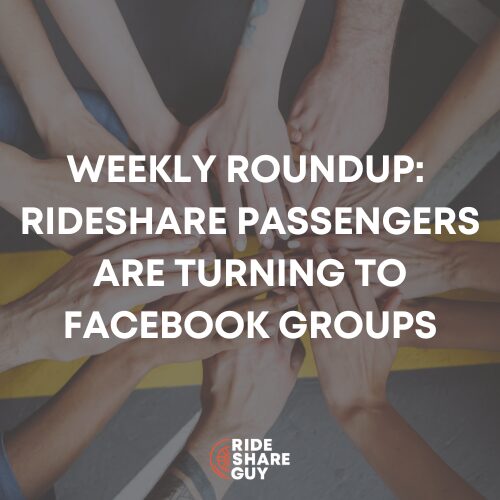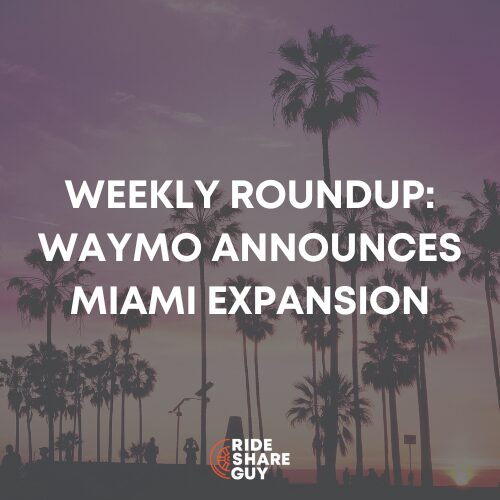Monday was a big day when it came to Uber announcements! On Monday, Uber CEO Dara Khosrowshahi published an op-ed in the New York Times about Uber’s ‘Third Way’ for independent contractors. That same day, I also interviewed him about the op-ed, the proposals outlined and I asked him some questions from you, the drivers, too.
Take a look at the YouTube video interview I did with Uber CEO Dara Khosrowshahi below and stay tuned for the podcast episode coming shortly. Make sure to subscribe to the Rideshare Guy YouTube channel so you always are notified when we publish new videos!
Watch the video here or below: My Interview with Uber CEO Dara Khosrowshahi
Monday, August 10, was a big day in the rideshare driving legal world. A California judge ordered Uber and Lyft to begin classifying their drivers as employees.
Uber and Lyft have been resisting this action due to the cost of paying drivers as employees. As employees, drivers are entitled to a bevy of benefits such as overtime and timely unemployment.
This article will lay out the details of the court action and what we might expect to happen next.

What’s Going On?
When I first started driving for Uber and Lyft back in December of 2015, life was good. Both companies provided adequate rates, multiplier surge pricing, and very aggressive bonuses particularly for full-time drivers. I had nothing to complain about.
However, things started to change. The bonuses got smaller and smaller. My pay was cut time and time again. I soon realized that Uber and Lyft had all the power over my revenue.
That type of power dynamic happens to employees, but not to independent contractors. Drivers like me started to get angry.
In California in 2019, voters passed a law called Assembly Bill 5 (AB5) which defined very specifically what constituted an independent contractor. Neither Uber nor Lyft drivers could pass the test.
However, Uber and Lyft ignored the law and instead created a statewide ballot initiative specifically for rideshare drivers that is up for a vote in the upcoming election.
While all this was going on, we experienced and are still feeling the effects of a pandemic. COVID-19 showed drivers how important benefits such as unemployment insurance really are.
Drivers Take Legal Action Against Uber and Lyft
Many drivers, myself included, have obtained legal counsel to pursue a financial remedy for the misclassification by Uber and Lyft.
I am using Potter Handy LLP. You can take a look at their damage calculator to get an estimate of what you are owed from the past four years.
Here is what Mark Potter had to say about this recent ruling:
In his ruling, the Honorable Judge Ethan P. Schulman characterized Uber and Lyft’s motions as “attempts to delay or avoid a determination” about whether they “are engaged in ongoing and widespread violations of AB5,” but dashed those aspirations by explicitly finding their motions “groundless.”
The court slammed the arguments that Uber and Lyft are merely tech companies, variously referring to those arguments as “nonsense,” “half-hearted,” and containing “glaring inconsistencies.” At least the court pulled its punch a bit by referring to the arguments as “risible,” instead of using the better known synonyms: ludicrous, ridiculous, farcical and laughable.
In any event, the court held what we all already knew: there is no way for Uber and Lyft to avoid the conclusion that its drivers are employees and, thus, Uber and Lyft have paid their drivers less than 50% of what they were owed. This ruling can—and will be—used by drivers in arbitration to get the pay that Uber and Lyft stole from them.
-Mark Potter, Attorney, Potter Handy LLP
Here Mark Potter is saying that this ruling will help drivers who go to arbitration to win because a judge has evaluated all the evidence and ruled in our favor.
State Unemployment Office Say We Are Employees
During the beginning of the pandemic, I applied for standard Unemployment Insurance (UI). I was at first denied, and then I appealed.
Upon appeal, I was contacted by the Employment Development Department (EDD) and asked 30 minutes worth of questions about my working relationship with Lyft.
A few weeks later, I was notified that I met the requirement of an employee. Therefore, I am receiving benefits under standard UI and not the PUA Pandemic Unemployment Assistance (PUA).
I am not alone. Many drivers in many states have reported the same result.
This Is Big News!
Here is CNBC’s coverage:

In this article, we read:
“A California judge granted a preliminary injunction Monday requiring Uber and Lyft to stop classifying their drivers as independent contractors pending further action by the court.
The order will take effect after 10 days, as the companies requested a brief stay during the appeals process.
If upheld, the ruling could have serious implications for Uber and Lyft, both of which are not yet profitable and have seen their ride-hailing businesses suffer during the pandemic. By classifying their drivers as independent workers, rather than employees, the companies have not had to pay for costly benefits that come with a full-time staff.”
CNN Business also reported on the story:

Excerpt From Legal Document
I was able to get my hands on the legal document and as you can read here, the judge orders Uber and Lyft to stop classifying drivers as independent contractors.
 What’s Next?
What’s Next?
Uber and Lyft have 10 days to appeal. No doubt, they will appeal.
Regardless, this ruling gets drivers one step closer to being classified as employees.
Many drivers don’t want to be classified as employees because they feel they will lose their freedom and flexibility, which has become a powerful benefit of being a rideshare driver. The truth is we don’t know what being an employee will look like.
We do know we would be entitled to more money in the form of benefits. We don’t know how the day to day workflow would change. The future is extremely uncertain.
Key Takeaways
When it rains, it pours. In January, AB5 passed. In March, the COVID-19 pandemic started to impact drivers. In late March, the CARES Act passed and drivers were given similar unemployment benefits as employees.
Earlier this week, Uber announced nine proposals designed to create a more favorable work environment for drivers. And now, Uber and Lyft are required by law to reclassify drivers as employees. Like it or not, the only thing that is constant is change. We will keep you posted as things continue to develop.
In the meantime, if you are driving, be safe. If you are not driving, get to work on your Plan B. Wear a mask and have a great day.
Readers, what do you think of this announcement? What do you think will happen to drivers in California – will they become employees?
-Jay @ RSG





